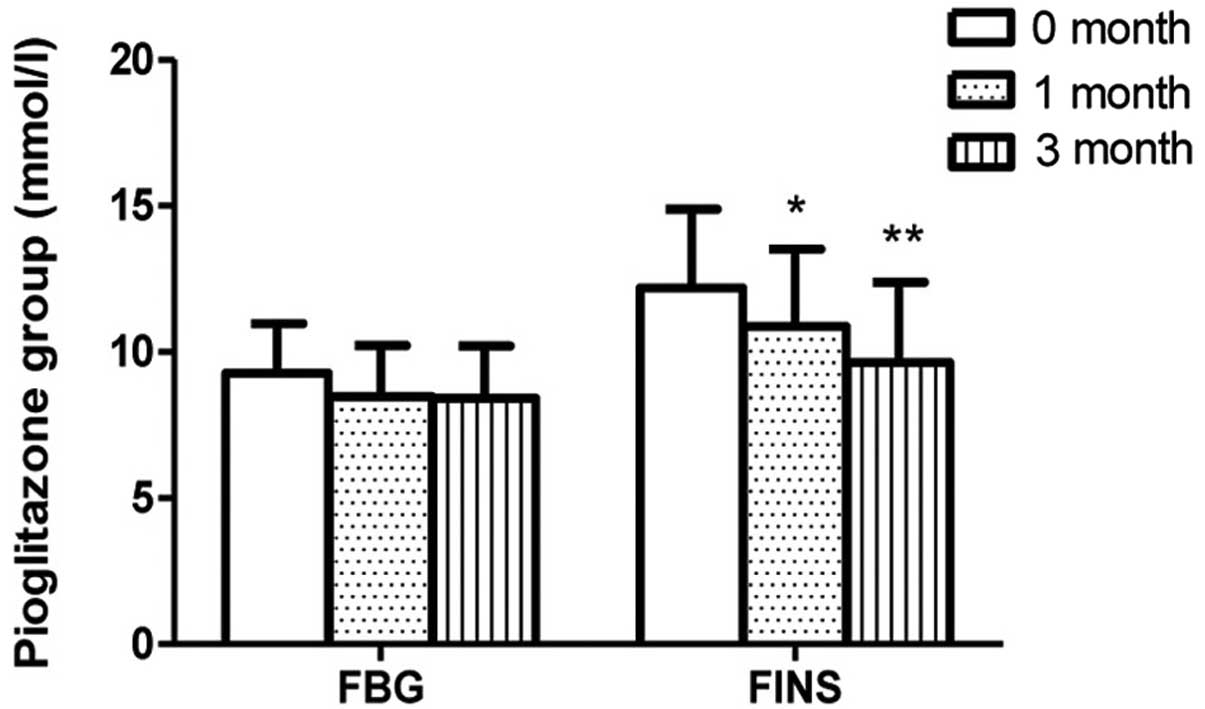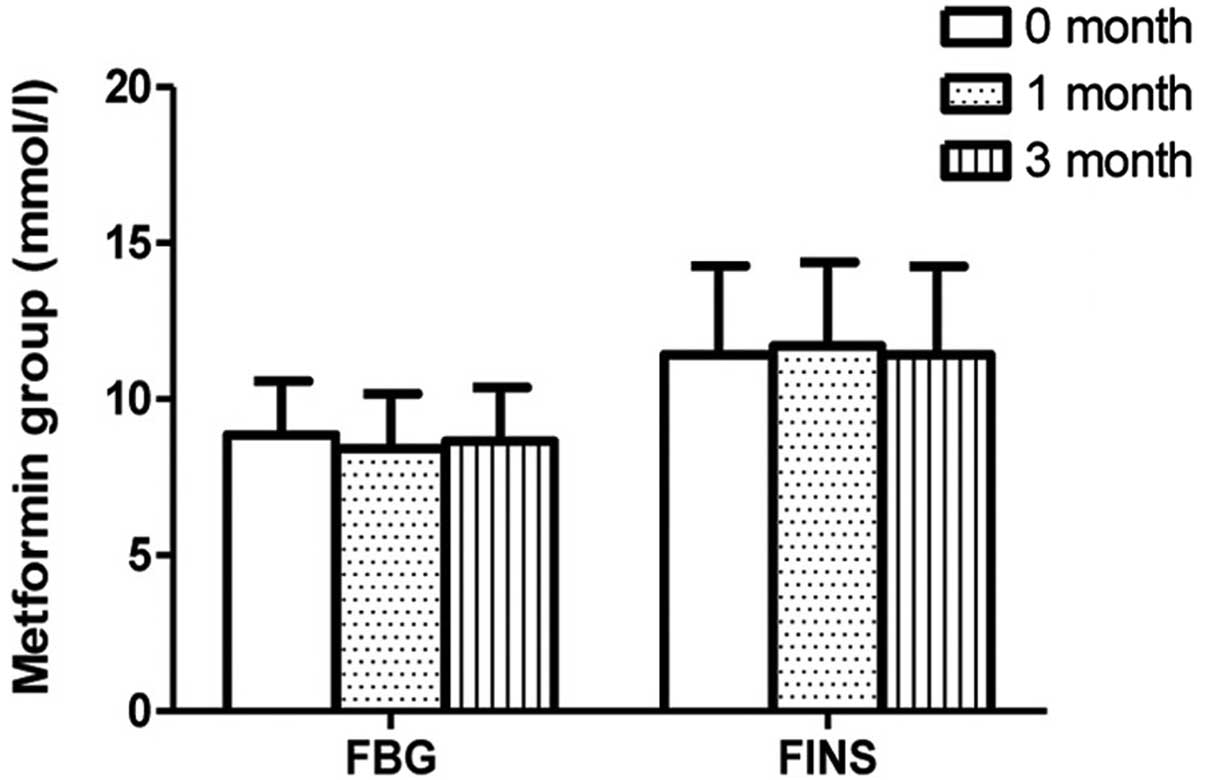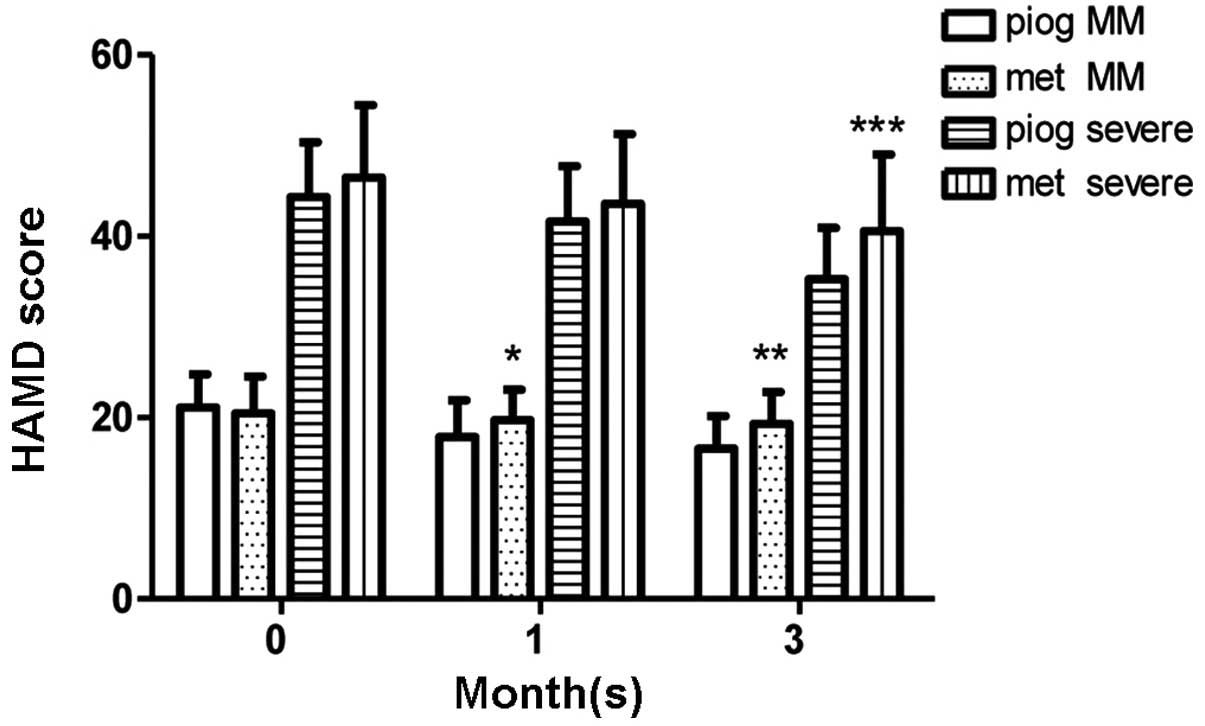Pioglitazone is an effective treatment for patients with post‑stroke depression combined with type 2 diabetes mellitus
- Authors:
- Published online on: June 24, 2015 https://doi.org/10.3892/etm.2015.2593
- Pages: 1109-1114
Metrics:
Total
Views: 0 (Spandidos Publications: | PMC Statistics:
)
Total PDF Downloads: 0 (Spandidos Publications: | PMC Statistics:
)
Abstract
The antidepressive effects of the antidiabetic medicine, pioglitazone, were recently reported in several studies. These effects may ameliorate the depressive symptoms of patients with post‑stroke depression (PSD). The present study aimed to evaluate the antidepressive effect of pioglitazone in patients with PSD combined with type 2 diabetes. A total of 118 consecutive patients with stroke who had depression were studied for an average of 3 months. The Diagnostic and Statistical Manual of Mental Disorders (fourth edition) was used to assess whether a patient was depressed or not. The severity of depression was evaluated by the Hamilton depression rating scale (HAMD). In accordance with their HAMD scores, the 118 patients were divided into a severe depression group (n=40) and a mild and moderate (MM) depression group (n=78). These subjects were then divided into pioglitazone [30 mg once daily (qd)] and metformin (0.5 g twice daily) subgroups. All patients were given fluoxetine (20 mg qd). Follow‑up evaluations, which included HAMD scores, activities of daily living (ADL) scores, fasting blood glucose (FBG) levels and fasting insulin (FINS) levels, were conducted on the first and third month following the beginning of the treatment. In the MM depression group, the HAMD score in the pioglitazone subgroup was lower than that in the metformin subgroup following treatment for 1 or 3 months. In the severe depression group, the HAMD score in the pioglitazone subgroup was lower than that in the metformin subgroup following 3 months of treatment. The FINS levels of the pioglitazone subgroup gradually decreased in the 3 months of treatment. No noticeable improvement was observed in the ADL scores and FBG values. In conclusion, the results of the current study demonstrate that pioglitazone effectively decreased HAMD scores and FINS values in patients with PSD, suggesting that pioglitazone may be useful for the treatment of patients with PSD combined with type 2 diabetes.















